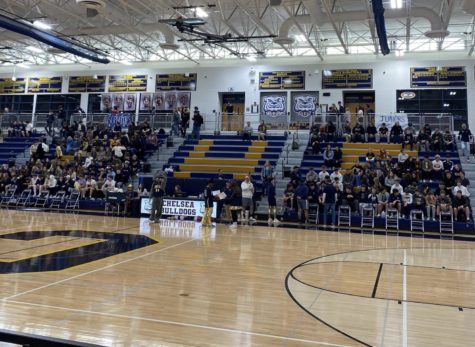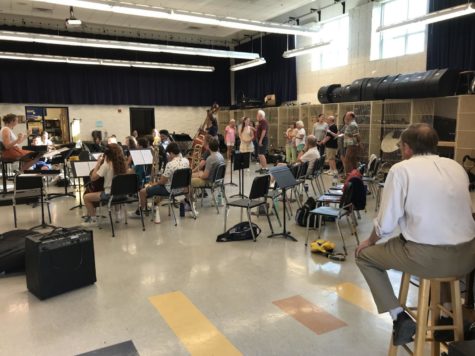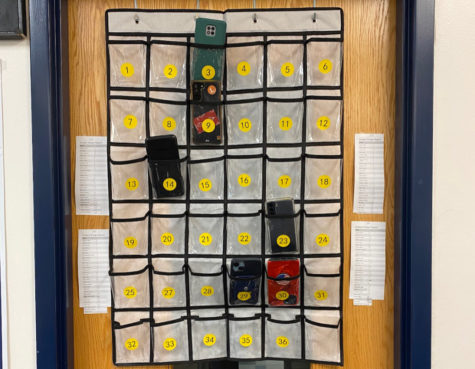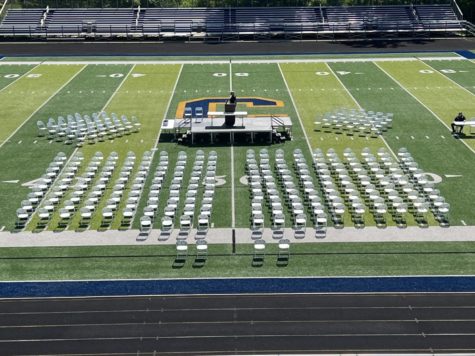US vs. Europe: High School Sports
Everything from football and basketball to softball and tennis are all common sports high schools around the U.S. offer, but how do high school sports in the U.S. differ from those abroad?
Fortunately, CHS can get an insightful look into sports abroad through the eyes of foreign exchange students from Sweden, Italy, Vietnam, and Brazil.
“Sports are very different [here] because we don’t do sports in high school,” Guido De Geronimo (‘23), an exchange student from Italy, said.
The main sport of interest also varies between countries. In Spain, for example, basketball is a big sport and is valued over soccer, though soccer is still played and valued a lot. In contrast, soccer in Italy is a big deal and for the US, the focus is typically on football.
“Obviously, soccer is the main sport in Italy that everyone wants to see me cheer for,” De Geronimo said.
In countries other than the U.S., high school sports don’t look the same. Or, in most cases, they don’t exist. As a prime example, Italy doesn’t offer sports during a student’s high school years, along with Sweden and more. The fact that students get heavily involved in a sports career during high school is something that separates the U.S. from a lot of other countries.
“In Spain, the sports in the schools are not that important or popular,” Cristina Hurtado Marin (‘25) said. “Instead you look for a club outside of school. Most sports are not played every day, but rather two or three times a week.”
One of the major differences is the life around high school and sports. In the US, high school student’s life is centered around their school culture, and most of their time is spent on school grounds with activities like clubs or sporting events.
In Europe, especially in countries like Sweden, high school students spend between 5-7 hours at school and then leave it behind them when they go home. No sports are offered at the high school, instead, if you wish to play a sport or be a part of a team, you would need to sign up for a club and go through a process of potential membership and payments. The process can be long and complicated, depending on the club.
“Speaking from personal experience, American social life is centered around sports and your team,” Hurtado Marin said. “I like the way the American sport system works because of that.”
The process of becoming a team member, or just simply joining a team in an American high school, makes it easy for high school students to commit by themselves. While in Europe, it’s a lot more of a commitment, and the encouragement is low from coaches and other students, resulting in high schoolers typically not joining at all. In the US, many students are enrolled in something and have a community to be a part of.
“It’s easier for people to get involved in sports here than in Italy,” De Geronimo said. “It is a bigger community with high encouragement and support from coaches.”
Despite many differences, Europe does have a similar sports spirit when it comes to certain games such as EC, where there is a similar tradition to the U.S. Super Bowl. On game day, you will most definitely see people wearing a jersey representing their country, and hear radio stations and ads around the country mention it, but it is still not as hardcore as it is in the U.S.
Overall, the high school sports situation in the U.S. vs. abroad is different but the difference is neither good nor bad, just different. To feel like a part of a community with people sharing the same interests as you and a smooth joining process, is something the US high school sports system has done well, adverse to other countries.

Emma is a senior exchange student from Sweden and this is her first year writing for the BluePrint. Outside of writing stories for the sports department,...










